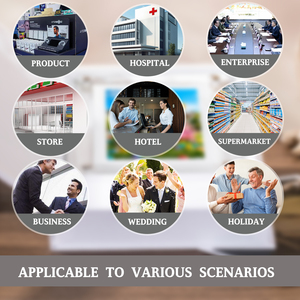Introduction to Virtual Frames
Virtual frames are revolutionary tools used in various fields, from graphic design to architectural visualization. By allowing users to display images, designs, and concepts in a simulated environment, these frames blend creativity with technology. They have become a crucial asset for professionals seeking innovative ways to present their work while enhancing the viewer's experience.
Types of Virtual Frames
Understanding the types of virtual frames available on the market can help professionals select the right tool for their needs. Here are some common categories:
- AR Virtual Frames: Utilize augmented reality technology to overlay images onto real-world environments.
- 3D Virtual Frames: Allow for the creation of three-dimensional representations of artwork or designs, providing depth and perspective.
- Static Virtual Frames: Simple displays that offer a fixed view of images or graphics, ideal for traditional presentations.
- Interactive Virtual Frames: Enable user interaction, allowing viewers to manipulate or change the display, providing a more engaging experience.
Applications of Virtual Frames
Virtual frames have numerous applications across different industries, enhancing both functionality and aesthetics. Here are some primary utilizations:
- Architecture: Architects use virtual frames to showcase building designs and spatial layouts, allowing clients to visualize projects before construction.
- Interior Design: Designers create virtual exhibitions of room designs, enabling clients to explore different styles and configurations in a virtual format.
- Gaming and Animation: Within the gaming industry, virtual frames are integral for developing environments and character models, providing a realistic backdrop for interactive experiences.
- Education: Educators utilize virtual frames in classrooms to display intricate concepts or historical visuals, making learning more interactive.
Advantages of Using Virtual Frames
The adoption of virtual frames brings several advantages that can significantly impact efficiency and creativity. Here are the key benefits:
- Enhanced Visualization: Virtual frames provide a clear and dynamic way to visualize concepts, ensuring better understanding among stakeholders.
- Cost-Effective: By utilizing virtual simulations, businesses can save on prototyping and staging costs associated with physical displays.
- Portability: Virtual frames can be easily shared or displayed across multiple platforms without the need for physical installation, promoting flexibility.
- Innovative Presentation: They offer a modern approach to showcasing work, making presentations more engaging and memorable for audiences.










































